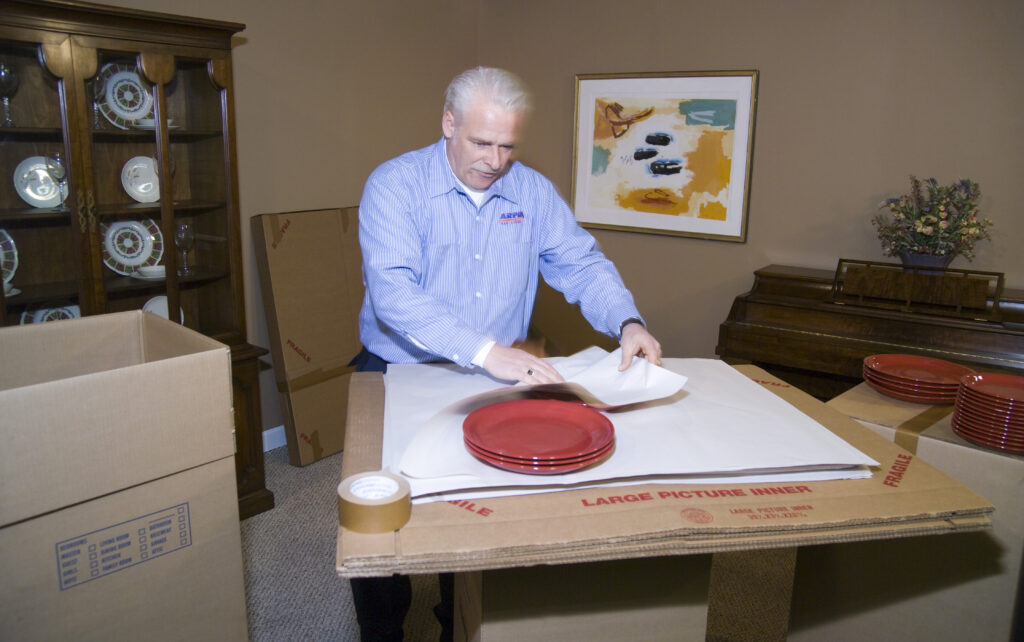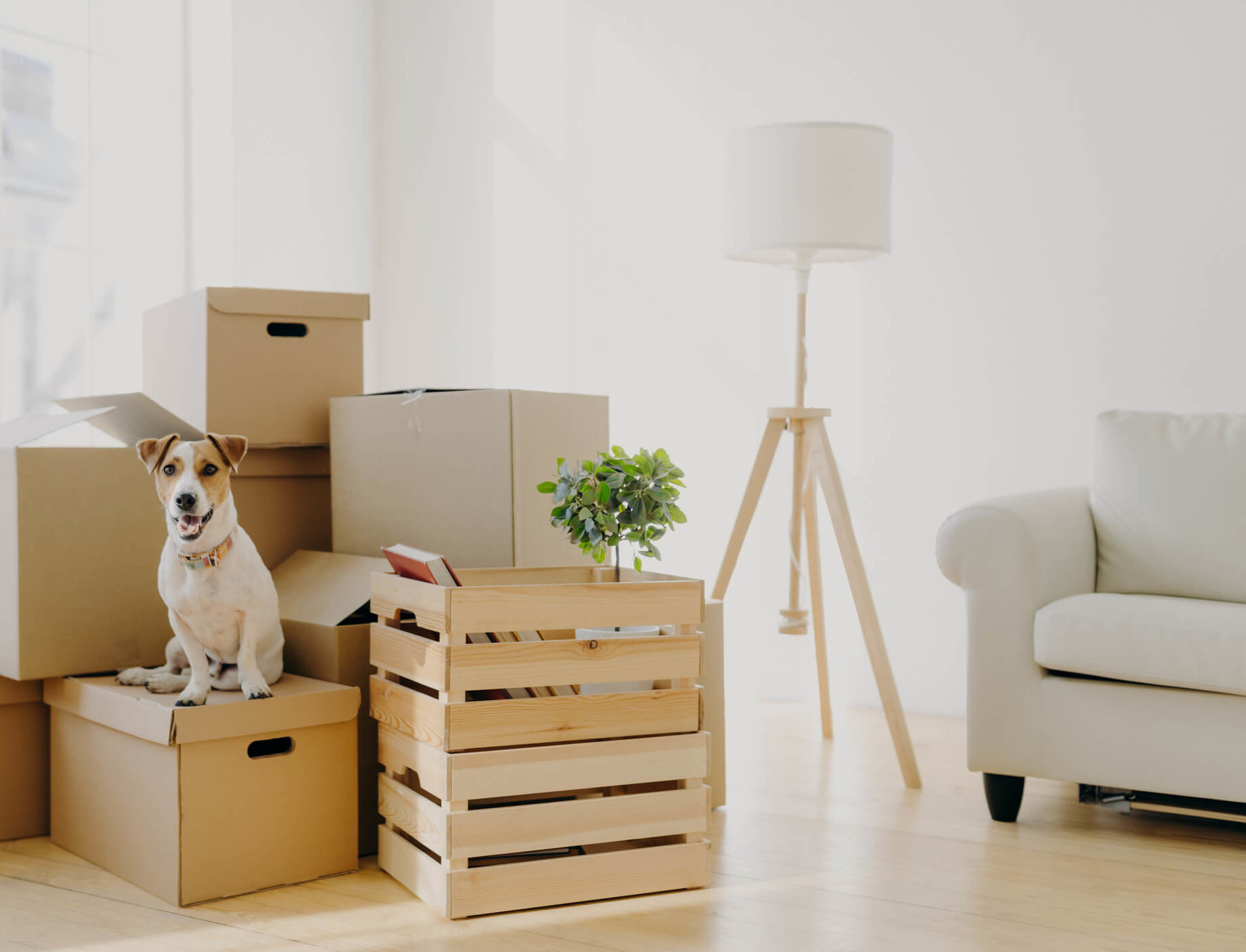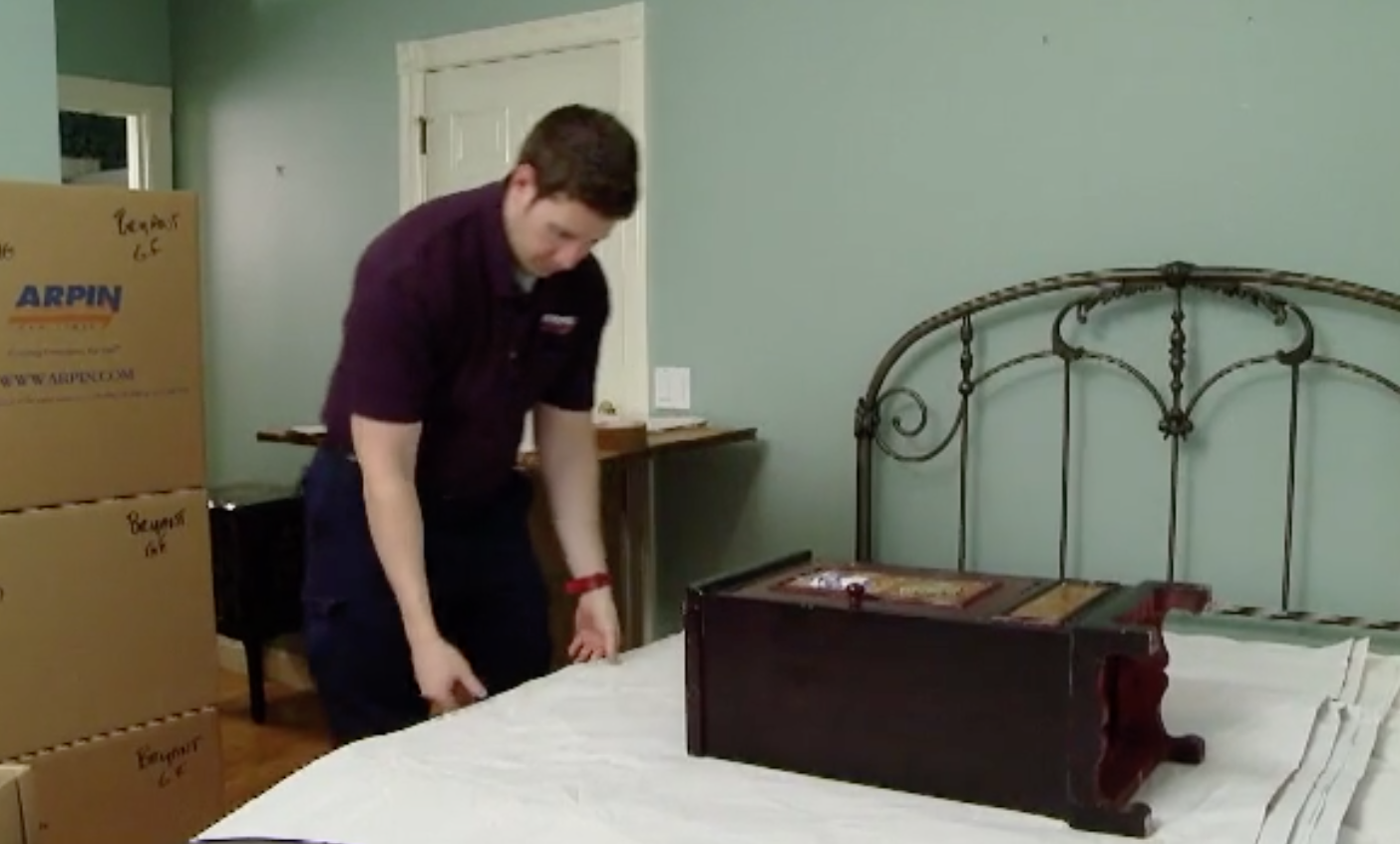How To Pack Everything In A Living or Family Room
How to pack a living or family room/speakers
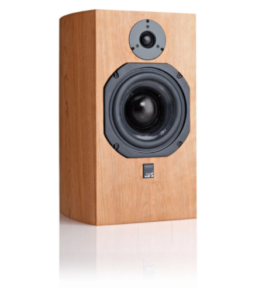 Speakers are made of multiple materials; wood, metal, plastic, fabric, and paper. For our purposes, we’ll focus on its most vulnerable materials on the front of the speaker case; the fabric front and the delicate speaker cones.
Speakers are made of multiple materials; wood, metal, plastic, fabric, and paper. For our purposes, we’ll focus on its most vulnerable materials on the front of the speaker case; the fabric front and the delicate speaker cones.
 Speakers should be wrapped in a sheet of brown export wrap. Only have smooth layers of paper against the front of the speaker. If there is extra wrapping, fold the excess onto the sides or the back.
Speakers should be wrapped in a sheet of brown export wrap. Only have smooth layers of paper against the front of the speaker. If there is extra wrapping, fold the excess onto the sides or the back.
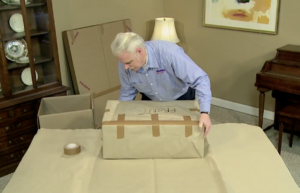 The paper around the speakers should be sealed on all surfaces like a gift. This makes it safe to handle the wrapped item without it slipping out of the paper.
The paper around the speakers should be sealed on all surfaces like a gift. This makes it safe to handle the wrapped item without it slipping out of the paper.
 The carton selected should allow the speaker to fit vertically in the carton with enough room above to add some extra padding on top. Place the wrapped speaker with its fragile front pressed tightly against the inside of the carton.
The carton selected should allow the speaker to fit vertically in the carton with enough room above to add some extra padding on top. Place the wrapped speaker with its fragile front pressed tightly against the inside of the carton.
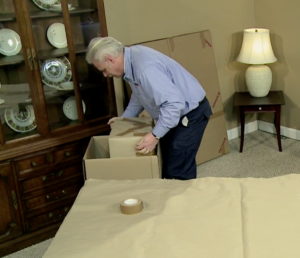 The orientation of a speaker up or down is basically irrelevant; only the front placement is important. If two speakers are put in the same carton, they should be oriented back-to-back with the front of the speakers against the walls of the carton and paper cushioning or other soft items in between.
The orientation of a speaker up or down is basically irrelevant; only the front placement is important. If two speakers are put in the same carton, they should be oriented back-to-back with the front of the speakers against the walls of the carton and paper cushioning or other soft items in between.
Packing a flower arrangement
 Flower arrangements are tricky to pack since the flowers cannot have any pressure applied to them but the vase needs some type of impact protection. We’ll use the same techniques used by the best movers in RI use.
Flower arrangements are tricky to pack since the flowers cannot have any pressure applied to them but the vase needs some type of impact protection. We’ll use the same techniques used by the best movers in RI use.
 You’ll have to have significant cushioning underneath and around the vase, but that cushioning cannot extend up near the flowers.
You’ll have to have significant cushioning underneath and around the vase, but that cushioning cannot extend up near the flowers.
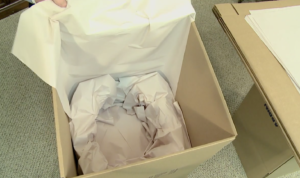 The best option is to create the equivalent of a “birds’ nest” out of white newspaper that just cushions the vase but doesn’t extend up into the flowers.
The best option is to create the equivalent of a “birds’ nest” out of white newspaper that just cushions the vase but doesn’t extend up into the flowers.
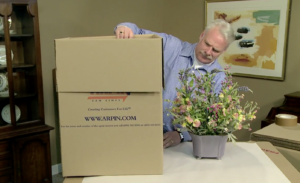 To begin, chose a carton that is several inches taller than the arrangement to allow for the bottom cushioning and wide enough in all directions so the arrangement is not significantly bent by the carton sides. We are using a 4.5 carton.
To begin, chose a carton that is several inches taller than the arrangement to allow for the bottom cushioning and wide enough in all directions so the arrangement is not significantly bent by the carton sides. We are using a 4.5 carton.
 To create a nest for flower arrangements, First, lay a piece of white news over the side of the carton starting at an inside corner. The paper should extend from the bottom and over the top edge. Make sure it is flat and even. Repeat for all four sides.
To create a nest for flower arrangements, First, lay a piece of white news over the side of the carton starting at an inside corner. The paper should extend from the bottom and over the top edge. Make sure it is flat and even. Repeat for all four sides.
 Next, place 9-12 sheets of crumpled paper into the bottom of the carton to provide impact protection for the bottom of the vase.
Next, place 9-12 sheets of crumpled paper into the bottom of the carton to provide impact protection for the bottom of the vase.
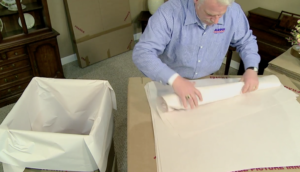 Now take a half dozen pieces of crumpled paper and work them into a crumpled tube about 24 inches long.
Now take a half dozen pieces of crumpled paper and work them into a crumpled tube about 24 inches long.
 Make a fold at 18 inches and place the tube along the bottom edge of the carton. Repeat this step a second time and place it long on the adjacent side. Repeat two more times until all 4 sides have a tube of paper along the bottom edge of the carton.
Make a fold at 18 inches and place the tube along the bottom edge of the carton. Repeat this step a second time and place it long on the adjacent side. Repeat two more times until all 4 sides have a tube of paper along the bottom edge of the carton.
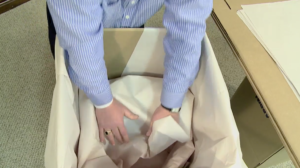 Next, take one of the sheets of the white newspaper that are lining the carton and fold it back into the center of the carton. Then, tuck it underneath the rolled paper.
Next, take one of the sheets of the white newspaper that are lining the carton and fold it back into the center of the carton. Then, tuck it underneath the rolled paper.
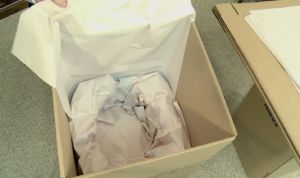 Fold in the other three sheets of lining paper. Repeat for the other three sides.
Fold in the other three sheets of lining paper. Repeat for the other three sides.
 Fuss with the paper to create a space for the vase base. This nest technique creates a soft, protective cocoon that holds the arrangement perfectly centered in the carton.
Fuss with the paper to create a space for the vase base. This nest technique creates a soft, protective cocoon that holds the arrangement perfectly centered in the carton.
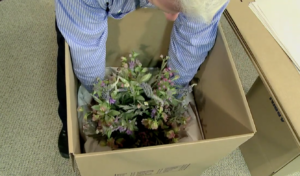 The wrapping paper on the sides is below the arrangement so it cannot harm the delicate flowers.
The wrapping paper on the sides is below the arrangement so it cannot harm the delicate flowers.
 There is no need to use any paper over the top of the arrangement at all. Seal the carton, and label it appropriately.
There is no need to use any paper over the top of the arrangement at all. Seal the carton, and label it appropriately.
Packing a lampshade
 Lampshades are typically made of silk or other very thin, fragile fabrics. Lampshades cannot tolerate even the tiniest amount of pressure or they will stretch or tear.
Lampshades are typically made of silk or other very thin, fragile fabrics. Lampshades cannot tolerate even the tiniest amount of pressure or they will stretch or tear.
 The carton selected for a lampshade should be several inches taller than the shade and wide enough in all directions so there is no pressure on the rim of the shade. Always remove the harp from the lampshade before you start to pack it.
The carton selected for a lampshade should be several inches taller than the shade and wide enough in all directions so there is no pressure on the rim of the shade. Always remove the harp from the lampshade before you start to pack it.
Depending on size and durability, several shades can be matched and nested together in the same carton. Wrap the smaller lampshade first and then place it inside the larger one. Overall, it is best to pack finer lampshades individually in their own carton rather than risk damage to save a few dollars.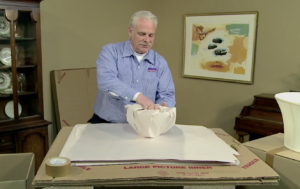

All finer lampshades should be wrapped in white newsprint to protect the fragile fabric. This is done by rolling the shade diagonally across the paper several times, folding over the excess paper inside as you go.
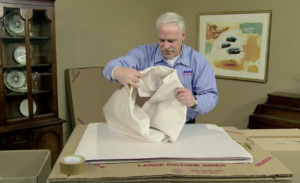
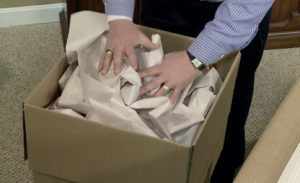 Lampshades are best packed upright or at worst upside down, but never pack on their side. The bottom of the carton should have a layer of crushed paper and the top of the shade should be contained by a few sheets of crumpled paper. Do not put paper against the sides of a shade.
Lampshades are best packed upright or at worst upside down, but never pack on their side. The bottom of the carton should have a layer of crushed paper and the top of the shade should be contained by a few sheets of crumpled paper. Do not put paper against the sides of a shade.
 Always pack the light bulb and harp-shaped support with the lamp, not with the shade. Make sure to specify on the lampshade carton which lamp the shade was removed from and any special handling requirements.
Always pack the light bulb and harp-shaped support with the lamp, not with the shade. Make sure to specify on the lampshade carton which lamp the shade was removed from and any special handling requirements.
Packing board games
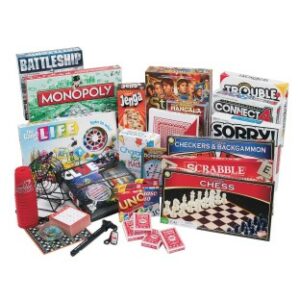 Board games like Monopoly are lightweight and are best packed in a large, or 4.5 carton.
Board games like Monopoly are lightweight and are best packed in a large, or 4.5 carton.
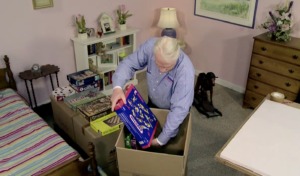 Since these games are too long to fit across the 18” carton; they will have to be packed on their end. Be careful when placing them in the cartons that the contents of the games do not fall out.
Since these games are too long to fit across the 18” carton; they will have to be packed on their end. Be careful when placing them in the cartons that the contents of the games do not fall out.
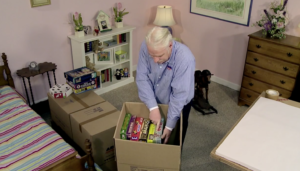 Start with the longest game boxes first. Match those with boxes of similar lengths and widths.
Start with the longest game boxes first. Match those with boxes of similar lengths and widths.
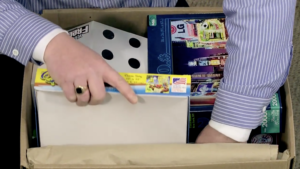 Next, fill the remaining areas with the next largest available game or toy boxes. If possible, the carton should be filled to the absolute top edge with items. Take your time to choose smaller-sized games and puzzles to fill all of the voids. Tape and label the carton.
Next, fill the remaining areas with the next largest available game or toy boxes. If possible, the carton should be filled to the absolute top edge with items. Take your time to choose smaller-sized games and puzzles to fill all of the voids. Tape and label the carton.
Packing wicker baskets
 Although wicker baskets come in an infinite variety of shapes and sizes, you should use the horizontal layering technique as well. Pack larger, sturdier baskets items on the bottom, and lighter, more fragile baskets higher up in the carton.
Although wicker baskets come in an infinite variety of shapes and sizes, you should use the horizontal layering technique as well. Pack larger, sturdier baskets items on the bottom, and lighter, more fragile baskets higher up in the carton.
 As with all cartons being packed, always start with a layer of 6-10 sheets of crumpled paper in the bottom as cushioning.
As with all cartons being packed, always start with a layer of 6-10 sheets of crumpled paper in the bottom as cushioning.
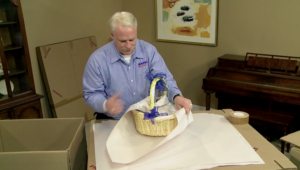 Begin with the largest, sturdiest baskets in first. Fill any voids in and around them with smaller wrapped baskets or paper.
Begin with the largest, sturdiest baskets in first. Fill any voids in and around them with smaller wrapped baskets or paper.
 Level off the first layer with more crumpled paper before you pack the second layer of items.
Level off the first layer with more crumpled paper before you pack the second layer of items.
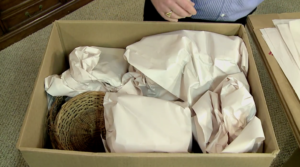 Add upper layer lightweight items. Fill voids with paper. The top of the contents will probably be uneven so fill in low areas with crumpled paper so the lid is fully supported. Tape and label the carton.
Add upper layer lightweight items. Fill voids with paper. The top of the contents will probably be uneven so fill in low areas with crumpled paper so the lid is fully supported. Tape and label the carton.
Packing a flat-screen TV
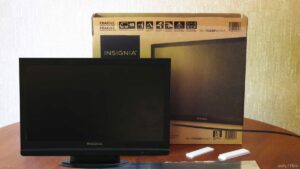 All flat-screen TVs will need to be packed into either a factory box or a TV carton to ship properly. In a perfect world, you would have saved the original carton that the TV came in. Follow the instructions on the carton flaps to repackage the TV.
All flat-screen TVs will need to be packed into either a factory box or a TV carton to ship properly. In a perfect world, you would have saved the original carton that the TV came in. Follow the instructions on the carton flaps to repackage the TV.
If you do not have the original factory TV carton, you will need to get one from U-Haul, or Home Depot. The video instructions for each type are below.
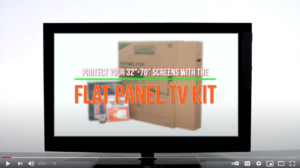 U-Haul offers a how-to video for their TV carton at: https://youtu.be/PG-gJfj2bQo
U-Haul offers a how-to video for their TV carton at: https://youtu.be/PG-gJfj2bQo
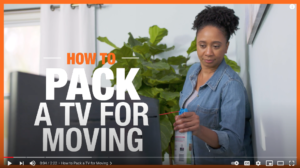 Home Depot offers a how-to video for their TV carton at: https://youtu.be/s5EKJlfm8BI
Home Depot offers a how-to video for their TV carton at: https://youtu.be/s5EKJlfm8BI
3rd party TV disassembly/reassembly services
 If all of this sounds like too much for you to handle, Arpin RI can pack them for you. If you need the full service of wall removal, disconnecting, and packing/crating, Arpin RI also offers a 3rd party service who will, for a fee, will detach, disconnect, and package the TV at your new house…Arpin RI will transport the TV… and the 3rd party company will unpack, reconnect, and reattach the TV in your new home a day or so later.
If all of this sounds like too much for you to handle, Arpin RI can pack them for you. If you need the full service of wall removal, disconnecting, and packing/crating, Arpin RI also offers a 3rd party service who will, for a fee, will detach, disconnect, and package the TV at your new house…Arpin RI will transport the TV… and the 3rd party company will unpack, reconnect, and reattach the TV in your new home a day or so later.
How to pack home computers and printers
 While there are slight differences in MAC and PC connections, most computers are disassembled and prepared for shipping the same way.
While there are slight differences in MAC and PC connections, most computers are disassembled and prepared for shipping the same way.
 Before you start, take a picture of the back of the computer with your phone to aid in the reconnection, make sure to eject any discs from the tray, and properly shut the computer down; don’t just pull the plug.
Before you start, take a picture of the back of the computer with your phone to aid in the reconnection, make sure to eject any discs from the tray, and properly shut the computer down; don’t just pull the plug.
 To begin, disconnect the wires from the back of the computer case one at a time beginning with the power cable, and neatly bundle them up. Typically, there are several color-coded connections for the mouse, keyboard, monitor, and printer but there may be others for speakers and/or peripherals.
To begin, disconnect the wires from the back of the computer case one at a time beginning with the power cable, and neatly bundle them up. Typically, there are several color-coded connections for the mouse, keyboard, monitor, and printer but there may be others for speakers and/or peripherals.
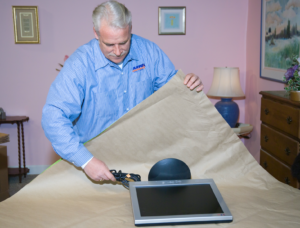 Whenever possible, utilize the original factory cartons to pack. If they are unavailable, always try and pack all of the computer’s components into a single carton. Always pack the cables and wires with the item they belong to in the same carton. Wrap the case first in export wrap and place it upright in the carton. Next, wrap the monitor in export wrap and place the front of the screen against the walls of the carton. Fill in the voids with the wrapped accessories.
Whenever possible, utilize the original factory cartons to pack. If they are unavailable, always try and pack all of the computer’s components into a single carton. Always pack the cables and wires with the item they belong to in the same carton. Wrap the case first in export wrap and place it upright in the carton. Next, wrap the monitor in export wrap and place the front of the screen against the walls of the carton. Fill in the voids with the wrapped accessories.
 If you intend to pack an inkjet printer in its normal upright position, you can leave the small inkjet cartridges in place. However, if you are packing the printer on its side or end, you should remove the cartridges because they may leak, place them in a plastic bag, and pack them with the printer. Follow the manufacturer’s instructions to remove the cartridges or look on YouTube for an instructional video for your model.
If you intend to pack an inkjet printer in its normal upright position, you can leave the small inkjet cartridges in place. However, if you are packing the printer on its side or end, you should remove the cartridges because they may leak, place them in a plastic bag, and pack them with the printer. Follow the manufacturer’s instructions to remove the cartridges or look on YouTube for an instructional video for your model.
 If you’re shipping a laser printer, you must ALWAYS remove the device’s large toner cartridges. Leaving the ink in your printer will most likely result in leakage during transit even if the printer is kept upright. Spilled ink that dries is very difficult to remove and can easily ruin the printer.
If you’re shipping a laser printer, you must ALWAYS remove the device’s large toner cartridges. Leaving the ink in your printer will most likely result in leakage during transit even if the printer is kept upright. Spilled ink that dries is very difficult to remove and can easily ruin the printer.
 Have plastic bags in hand before you begin to remove the cartridges since it is a messy process. Follow the manufacturer’s directions for proper removal and storage of the cartridge.
Have plastic bags in hand before you begin to remove the cartridges since it is a messy process. Follow the manufacturer’s directions for proper removal and storage of the cartridge.
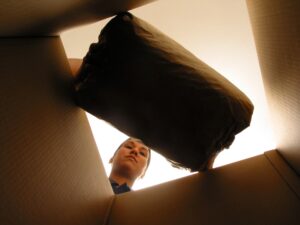 Wrap the printer in export paper and make every attempt to keep it upright when packing in the carton. Always use a lot of crumpled paper as padding around delicate areas of the printer.
Wrap the printer in export paper and make every attempt to keep it upright when packing in the carton. Always use a lot of crumpled paper as padding around delicate areas of the printer.
How to pack books
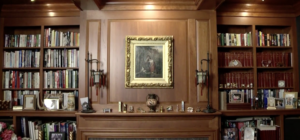 Books are typically displayed and stored vertically on shelves in homes and libraries.
Books are typically displayed and stored vertically on shelves in homes and libraries.
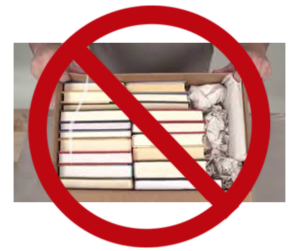 However, they should never be packed into a carton and transported vertically; not on their end or their side. This could easily damage the binding; especially with older, more fragile books.
However, they should never be packed into a carton and transported vertically; not on their end or their side. This could easily damage the binding; especially with older, more fragile books.
 The technique used to pack all types of books is identical. Regardless of whether they are hardcover, paperback, or softcover. All books are made of paper, and paper prefers to lie down rather than stand up. Virtually all publishers package and transport their new books lying flat on their sides.
The technique used to pack all types of books is identical. Regardless of whether they are hardcover, paperback, or softcover. All books are made of paper, and paper prefers to lie down rather than stand up. Virtually all publishers package and transport their new books lying flat on their sides.
 Using the principles of the horizontal layering technique, start with the largest, sturdiest books first. Attempt to choose books of similar length and width to completely fill the bottom of the carton end to end or side to side.
Using the principles of the horizontal layering technique, start with the largest, sturdiest books first. Attempt to choose books of similar length and width to completely fill the bottom of the carton end to end or side to side.
 In most cases, the books will not fill 100% of the space side to side so you will always have an inch or two leftover. It is acceptable to fill these spaces by placing a book vertically as it is not bearing any weight.
In most cases, the books will not fill 100% of the space side to side so you will always have an inch or two leftover. It is acceptable to fill these spaces by placing a book vertically as it is not bearing any weight.
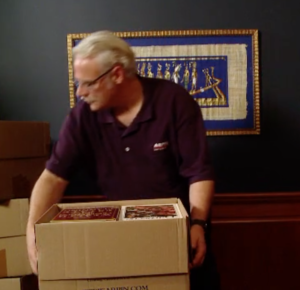 Continue to stack books on their sides until the top of the carton is almost reached. Then slightly overfill the carton with very thin books like magazines so the carton can’t crush. Tape and label the carton.
Continue to stack books on their sides until the top of the carton is almost reached. Then slightly overfill the carton with very thin books like magazines so the carton can’t crush. Tape and label the carton.
Packing gaming systems
 Packing of all types of gaming systems for transport pretty standard. Always remove any cartridges and disconnect all wired controllers.
Packing of all types of gaming systems for transport pretty standard. Always remove any cartridges and disconnect all wired controllers.
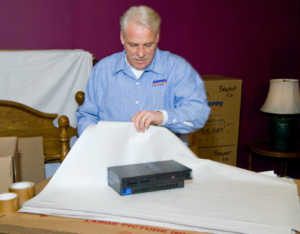 Wrap the base console in several layers of paper and place it vertically in the carton. Wrap all of the controllers carefully so as not to damage any of the buttons. Remember to keep all power cords, cartridges, and controllers in the same carton to make setup at the new residence easier. Tape and label the carton.
Wrap the base console in several layers of paper and place it vertically in the carton. Wrap all of the controllers carefully so as not to damage any of the buttons. Remember to keep all power cords, cartridges, and controllers in the same carton to make setup at the new residence easier. Tape and label the carton.
